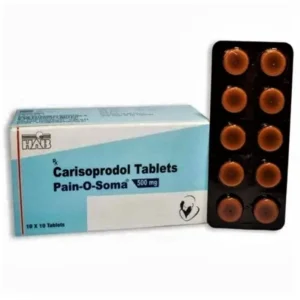What is Oxycodone?
Oxycodone is a powerful prescription opioid medication that helps manage moderate to severe pain. It binds to opioid receptors in the brain and spinal cord, which reduces the perception of pain. Doctors often prescribe Oxycodone for pain relief after surgery, injury, or for chronic conditions like cancer-related pain.
Common Brand Names
Oxycodone is available under various brand names, including:
- OxyContin (extended-release)
- Percocet (oxycodone combined with acetaminophen)
- Roxicodone (immediate-release)
How is Oxycodone Taken?
Oxycodone comes in several forms, including tablets, capsules, and liquid solutions. It can be taken as:
- Immediate-release: Provides quick pain relief and is typically taken every 4 to 6 hours as needed.
- Extended-release: Designed for around-the-clock pain management and is taken once or twice daily.
Always follow your doctor’s instructions and never crush, chew, or break extended-release tablets, as this can lead to a dangerous overdose.
Uses of Oxycodone
Oxycodone is prescribed for:
- Post-surgical pain
- Chronic pain conditions
- Pain from injuries or accidents
- Cancer-related pain
Potential Side Effects
Like all medications, oxycodone may cause side effects. Common side effects include:
- Nausea or vomiting
- Drowsiness or dizziness
- Constipation
- Dry mouth
- Headache
Serious side effects, though rare, may include:
- Difficulty breathing
- Severe drowsiness
- Allergic reactions (rash, swelling, itching)
- Slow heart rate or low blood pressure
If you experience any severe side effects, seek medical attention immediately.
Risks and Warnings
Oxycodone is a controlled substance due to its potential for misuse, addiction, and dependence. Key risks include:
- Addiction: Prolonged use can lead to physical and psychological dependence.
- Overdose: Taking too much oxycodone can cause life-threatening respiratory depression.
- Withdrawal: Stopping the medication abruptly can lead to withdrawal symptoms like anxiety, sweating, and muscle pain.
To minimize risks, take oxycodone exactly as prescribed and inform your doctor of any history of substance abuse or mental health conditions.
Safe Use of Oxycodone
- Always take the prescribed dose and do not share your medication with others.
- Avoid alcohol and other sedatives while taking oxycodone, as they can increase the risk of side effects.
- Store oxycodone in a secure place to prevent misuse by others.
- Dispose of unused medication properly through a drug take-back program.
Alternatives to Oxycodone
For those concerned about the risks of opioids, non-opioid pain management options may include:
- Nonsteroidal anti-inflammatory drugs (NSAIDs) like ibuprofen
- Physical therapy or acupuncture
- Antidepressants or anticonvulsants for nerve pain
Consult Your Doctor
If you have questions about oxycodone or are experiencing side effects, consult your healthcare provider. They can help you weigh the benefits and risks and explore alternative treatments if necessary.





